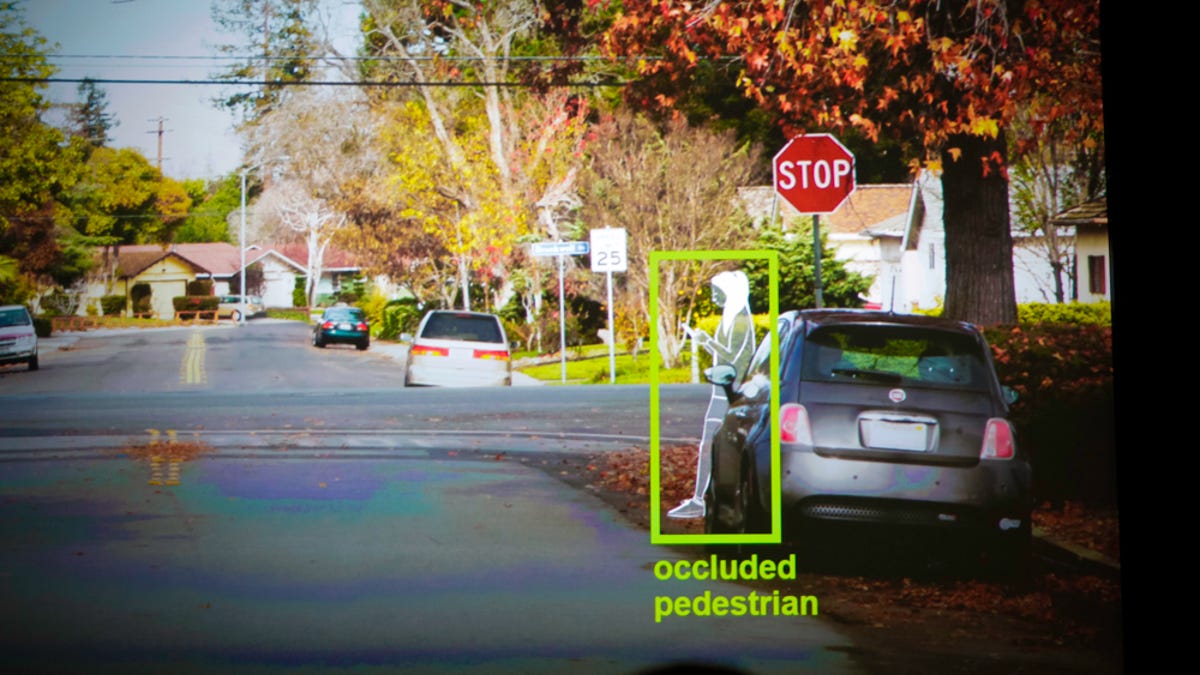Cars drive autonomously with Nvidia X1-based computer
During Nvidia's CES 2015 press conference, CEO Jen-Hsun Huang showed off the Drive PX computer, based on the just-announced Tegra X1 chip, enabling self-driving cars.

LAS VEGAS -- Making the self-driving car a reality requires sensors, processors and pretty slick programming to negotiate all the obstacles on a typical street. At the 2015 International CES, Nvidia offered automakers two out of three with its Drive PX autopilot car computer.
Nvidia CEO Jen-Hsun Huang began the presentation with the new Tegra X1 chip boasting a teraflop of processing power in a tiny, low-power body, ideal for an automotive environment.
The Drive PX computer, based on X1, takes the input from any sort of sensor, be it laser, radar or camera, processing the data to form a live environment around the car. Using what Huang referred to as deep neural learning, the Drive PX can dynamically recognize a diversity of objects, including street signs, pedestrians and cyclists, even differentiating between types of vehicles such as SUVs and sedans.
An automaker implementing the Drive PX computer would program how the car reacts to the environment around the car, which could include braking, steering and accelerating.
Building a neural network
"Deep neural learning" is a key component of Nvidia's Drive PX computer. Rather than programming the computer to recognize specific road signs and other features of a typical driving environment, Nvidia is building a deep neural network on a supercomputer at its Silicon Valley headquarters. Scientists feed the supercomputer thousands of images from which it learns to recognize different things.
The supercomputer breaks down each thing into smaller components, from which it can extrapolate the whole. The resulting neural network gets programmed into the Drive PX. When a camera or other sensor feeds data into the Drive PX, the computer breaks up the image and begins looking for identifying patterns. For a pedestrian it might identify an arm and a head, and begin to extrapolate the whole object as a pedestrian.
Huang showed off live processing of video fed to the Drive PX computer, in which it correctly identified a pedestrian partially obscured by an intervening car. In addition, the demonstration showed the Drive PX could identify traffic lights and whether they were green or red, and different types of cars on the road. The live demo even showed how the Drive PX initially identified something as a pedestrian partially hidden behind a car, but then updated that identification to a cyclist when more of the image came into view.
Remarkably, Huang envisions feedback from real cars on the road using the Drive PX helping to refine the deep neural network. When the Drive PX, running in a production car on the road, can't identify an object in its environment, it can send that imagery back to Nvidia over the Internet. Scientists would then help the supercomputer running the deep-neural-learning program to understand this new imagery, and an updated version of the deep neural network would be sent down to all cars running Drive PX.
While lasers and radar are used extensively in current autonomous car development, Huang said that Drive PX and new camera technology could make self-driving features less expensive, so automakers could implement them in lower-end cars.
Improved cockpit graphics
Further pushing Tegra X1 for car use, Nvidia announced the Drive CX computer, also based on the new chip. The Drive CX is devoted to running cockpit display systems, everything from navigation to video for rear-seat passengers.
Using the Tegra X1 chip, the Drive CX can support four full-HD displays simultaneously. Huang demonstrated how the Drive CX can render a virtual instrument cluster, complete with dynamic data input and lighting effects. For automakers, which are increasingly going to LCD instrument clusters, the Drive CX provides a library of textures and components, letting them implement custom-looking gauges and driver information displays.
Nvidia showed a navigation system display rendered with the Drive CX, with much more refined 3D maps than can be found in current cars. The display showed dynamic lighting around the car's location on the map, serving as a good visual indicator for the driver.
Both the Drive PX and Drive CX computers could enable automakers to quickly implement futuristic advanced driving-assistance and display features in their cars.

